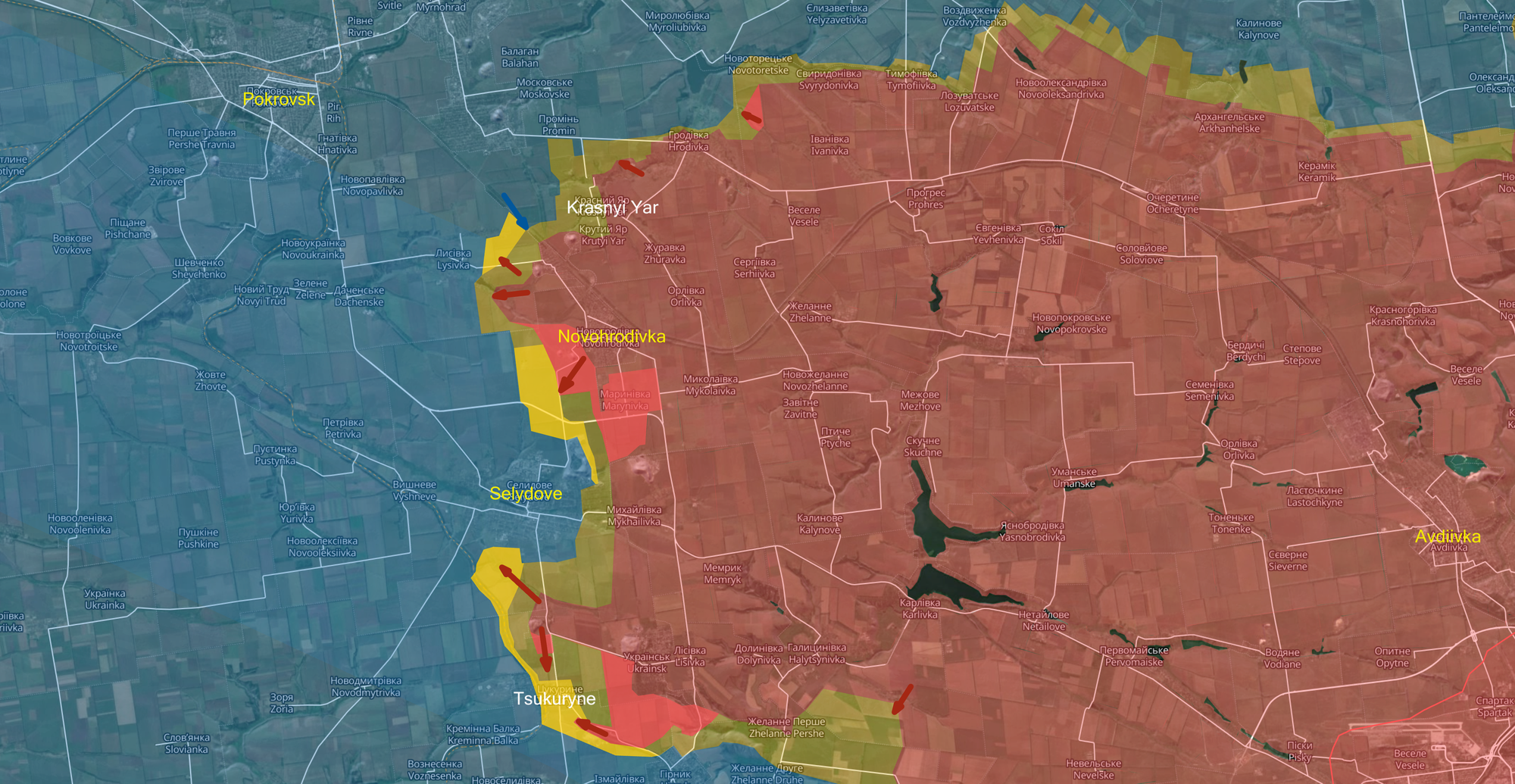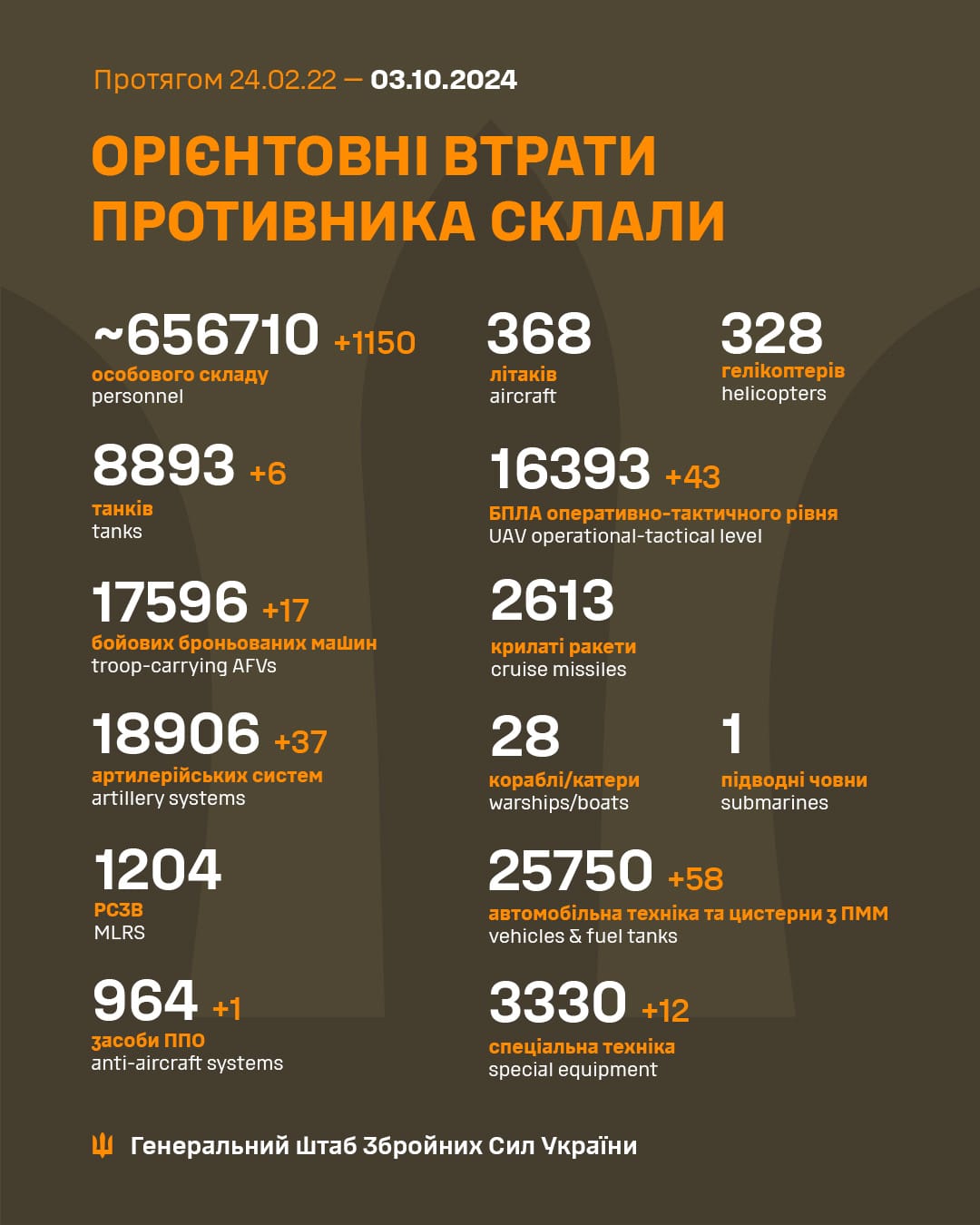The conflict that began with Vladimir Putin's illegal and unprovoked invasion of Ukraine has always been a war that was bound to define the future of Ukraine, Europe, NATO, and to a large degree, world stability. That's still true. But now, it's also about the future of war. Every war.
In the initial days of the conflict—when it seemed that Russia would crush its smaller neighbor under the weight of the "second best army in the world" and Putin would soon be reviewing the troops in Maidan Square—this still apeared to be a conflict built on weapons and tactics from World War II. Or sometimes World War I.
Russia advanced in famously long convoys of armor. Trenches and fortifications soon became major features on both sides. There were lines of tanks picking their war through minefields, partisans sniping from treelines, and shells smashing into both government buildings and residential districts. We had all seen this film before.
But not long into the conflict, it became clear that advances in technology were going to play a major role.
We sometimes like to pretend that if this war goes on long enough, Russia will be fighting with "sticks and stones." But the truth is, if this conflict continues, it's America—and every other Western nation—whose arsenal is at risk. Not because we send too much to Ukraine, but because we send too little. And in the process, we threaten to make our own weaponry obsolete.
At The Atlantic, writer Anne Applebaum spells out the simple truth. There is only one way this war can end: "Russia has to stop fighting."
In truth, the imaginary red lines, the slow provision of weapons, and the rules about what can and can’t be hit are not the real problem. On its own, a White House decision to allow the Ukrainians to strike targets in Russia with American or even European missiles will not change the course of the war. The deeper limitation is our lack of imagination. Since this war began, we haven’t been able to imagine that the Ukrainians might defeat Russia, and so we haven’t tried to help those who are trying to do exactly that.
The reason that Ukraine is still in this fight isn't just because the U.S. and Europe have shipped them surplus weaponry—often reluctantly and not until the face of the war had changed so much that the weapons being shipped were no longer critical to Ukraine's defense. It's not because Ukrainian officers and non-coms have been training with Western forces, learning to adapt combined arms tactics into something that can be wielded by unfamiliar troops and a mish-mash of weapons from a dozen nations.
Those things have helped. But what's been far more important is a combination of Ukrainian courage and Ukrainian inventiveness.
Even as Russia was advancing behind thousands of tanks, walls of artillery fire, and human waves that seemed unchanged since the last time Kursk was in world news, both sides were already using drones for surveillance and targeting. Within weeks of the initial invasion, Iranian-made "Shahed" drones began to play a larger and larger role in Russia's attacks on Ukrainian cities. By December 2022, over 1,700 Shaheds had been deployed, often in large nighttime waves.
U.S. drones were part of the first tranche of weapons provided to Ukraine by Western allies. That included both large drones and smaller "kamikaze" drones that could be directed against enemy targets like smart artillery shells.
Those first U.S. single-use drones were largely AeroVironment's Switchblade 300, which turned out to be a mixed bag in practice. They could take out a civilian vehicle, or a communications facility, but they proved relatively ineffective against armor. They were also limited in number and required a special base station for operation. Their overall impact was minimal ... but they were a sign of things to come.
It was really when Ukrainian engineers figured out that an ordinary consumer-grade quadcopter drone had the lifting capacity to carry an explosive charge equivalent to an anti-tank mine that everything changed. At first, they stripped down models like the DJI Air or Mavic, tearing off the plastic shells so that every gram could be devoted to hauling more explosive punch. Later, engineers on both sides began to make use of more acrobatic models that were primarily flown using VR goggles.
Suddenly the rules of war were out the window. Armor meant almost nothing. Every open port, air vent, and slow-moving transport was an invitation for a swarming attack. Inexpensive, plentiful, and easily directed, FPV drones went to the front lines in thousands and then tens of thousands. Combined with minefields to slow down enemy advances, FPV drones have been responsible for many of the great killing fields of this war.
Ukrainians are making their own drones, and Russia is following their lead. Those drones: in the air, on land, and at sea, are rewriting the rulebooks.
🔥 🐲 Ukrainian Dragon's Breath drone torches Russian positions in occupied Luhansk region. pic.twitter.com/ZT5hTjXPbO
— Igor Sushko (@igorsushko) October 2, 2024
Russia has withdrawn its Black Sea fleet—which contains approximately 50 surface vessels, six submarines, and 25,000 personnel—to what it hopes are safer ports away from the conflict after both air and sea drones took out vessels following directions being given by operators hundreds of kilometers away.
Ukrainian Sea Baby maritime drones are now equipped with Grad systems
— NEXTA (@nexta_tv) May 22, 2024
It is reported that last night Sea Baby together with the Ukrainian Navy effectively worked from the sea against the positions of Russian occupiers on the Kinburn Spit.
The media also publish footage of Sea… pic.twitter.com/rzoTlQLsdy
FPV drones have become the primary reason that almost 9,000 Russian tanks have been damaged or destroyed.
After a recent failed Russian assault, an FPV unit from the 30th Mechanized Brigade successfully destroyed a Russian tank using a drone armed with thermite. pic.twitter.com/XFol9Pev5a
— NOELREPORTS 🇪🇺 🇺🇦 (@NOELreports) October 2, 2024
Land drones on both sides are currently lagging behind the development of flying drones, but they're improving rapidly.
Land drones at work
— Euromaidan Press (@EuromaidanPress) September 12, 2024
A Ukrainian suicide ground drone entered a culvert beneath a railway and destroyed the Russian hideout in it from the inside.
📹 https://t.co/QMbFnBDQsm pic.twitter.com/NiIwzq6Zey
In nature, the competition to pass along genetic material drives evolution. When conditions are hard, that race ramps up. Species that had been around for millions of years lose out to competitors honed in a crucible of catastrophic change.
In technology. nothing spurs advance like war. That was true for every major conflict of the 20th century. The best army in the world going into World War I or World War II would have been cannon fodder for any opponent coming out of that conflict.
Those rules haven't changed.
That's not to say that FPV drones are about to erase the advantage of weapons of mass destruction or threaten America's ability to "shock and awe." But they are rapidly overtaking the middle-ground; the space where Western armies have long depended on well-trained and well-integrated combined arms tactics.
It's been easy to sit back and declare that Ukraine's failed attempts to make sustained breaches in Russian lines in the south are due to a lack of experience and inadequate training. But the truth is that it's no longer clear that combined arms would work on this battlefield, no matter who was driving the tanks. And the longer this goes on, the less of America's arsenal will remain effective.
In so many ways, this is a "use it or lose it" moment. And in this case, "use it" means providing technology to Ukraine and allowing them to deploy it as needed to fend off Russia's assault.
As Applebaum writes:
Zelensky also presented a victory plan that asked, among other things, for Ukraine to have the right to use American and European long-range missiles to strike military targets deep inside Russia. This kind of request is now familiar. In each stage of the war, the Ukrainians and their allies have waged public campaigns to get new weapons—tanks, F-16s, long-range missiles—that they need to maintain a technological edge. Each time, these requests were eventually granted, although sometimes too late to make a difference.
This may be the last request. It may not. But the one thing that doesn't seem to be evolving in this war is the U.S. response. We've seen that delays weaken the effectiveness of the "go ahead" when it eventually comes. And we've seen that the go-ahead will eventually be necessary. But we don't seem to learn the lesson.
There's a scene in Ken Burn's lauded documentary of the Civil War in which he discusses the appearance of the Monitor and Merrimack as they square off to fight at Hampton Roads. "From that moment," says the narrator, "every other navy in the world was obsolete."
Please, let's not wait for that moment before we give Ukraine what it needs to make Russia stop fighting.
Ukraine expands area of incursion in the north

Ukraine has continued to take advantage of Russia's difficulty in maintaining a bridge across the Seym River to open a new incursion near the town of Veseloye in Russia's Kursk Oblast. Ukraine has also increased control in the area of Popova-Lezhachi to the west. This offers the possibility that Ukraine may try to close the 16 kilometer gap between these forces, squeezing any Russian troops remaining in the area.
However, there are no good paved roads along a direct route in this area. Ukraine may choose to drive toward the Seym, which would offer the opportunity to use the improved roadways that connect a trio of towns on the south bank of the river.
While most of the positions in the main incursion remain unchanged over the last week, Russia has made a push at the southeastern corner, near the village of Borki. It's unclear that any territory here has changed hands in the last week, but Russia has poured more artillery into this corner than anywhere else in this part of the map over the last few days.
Russia continues slow advance on Pokrovsk

Russia's move toward Pokrovsk has definitely slowed, but it has not stopped. This continues to be where Russia is positioning its largest force and directing the majority of its artillery, armor, and drones.
In the last week, Russia has continued its movement south of Selydove. In the process, it's put a pincer around the small crossroads at the village of Tsukuryne. While this would not represent a major loss for Ukraine in terms of forces or position, it would help Russia prepare to move north against Selydove, which does represent a critical position in guarding the approach to Pokrovsk.
To the north, Russia has taken tacit control of fields next to Novohrodivka, but since this is mostly open terrain, it's unclear what this means. Ukraine may have been forced to move artillery and defending units to the west. If so, Russia may be close to gaining control over a segment of the M04 highway, which is the primary route into Pokrovsk from the south. Ukrainian forces at Selydove might be able to keep that stretch of highway (just 1km north of the town) from being passable, but only so long as Ukraine can hold onto Selydove.
As previously mentioned, Pokrovsk is not only a major logistical hub that has been critical in supplying the Donetsk region, it's also the site of almost half of Ukraine's steel production. Though it's pre-war population was about 10,000 smaller than Bakhmut, it's loss would represent a greater strategic blow.
This past week saw Russia finally take full control over Vuhledar after more than a year of assaults. It's not a big strategic loss, and Russia had long ago bombed the location into inhabitability. But it's still sad to see it go after this location provided the setting for so many jaw-dropping Russian defeats.
Russia has liberated Vuhledar.
— Kadi🇪🇪🌻 (@TheFl0orIsLaVa) October 2, 2024
Now it looks like russia. pic.twitter.com/NMsvwDsgPF
"The lives of our fighters are much more important than any construction." - President Zelensky on the withdrawal from Vugledar. pic.twitter.com/ahTTpI1ntO
— WarTranslated (Dmitri) (@wartranslated) October 3, 2024
But to see Russian destruction at its worst, take a look at the poor city of Vovchansk in northern Kharkiv oblast. This was formerly the biggest hub for trade between Russia and Ukraine. Russia occupied it through much of the war before Ukraine seized it back, still mostly intact. Now Russia has simply flattened the city using a combination of glide bombs and artillery.
Russia still has not secured control over Volchansk.
Photos of destroyed Volchansk, Kharkiv region. pic.twitter.com/Nd4CVPw8ds
— NEXTA (@nexta_tv) October 3, 2024















Comments
We want Uncharted Blue to be a welcoming and progressive space.
Before commenting, make sure you've read our Community Guidelines.